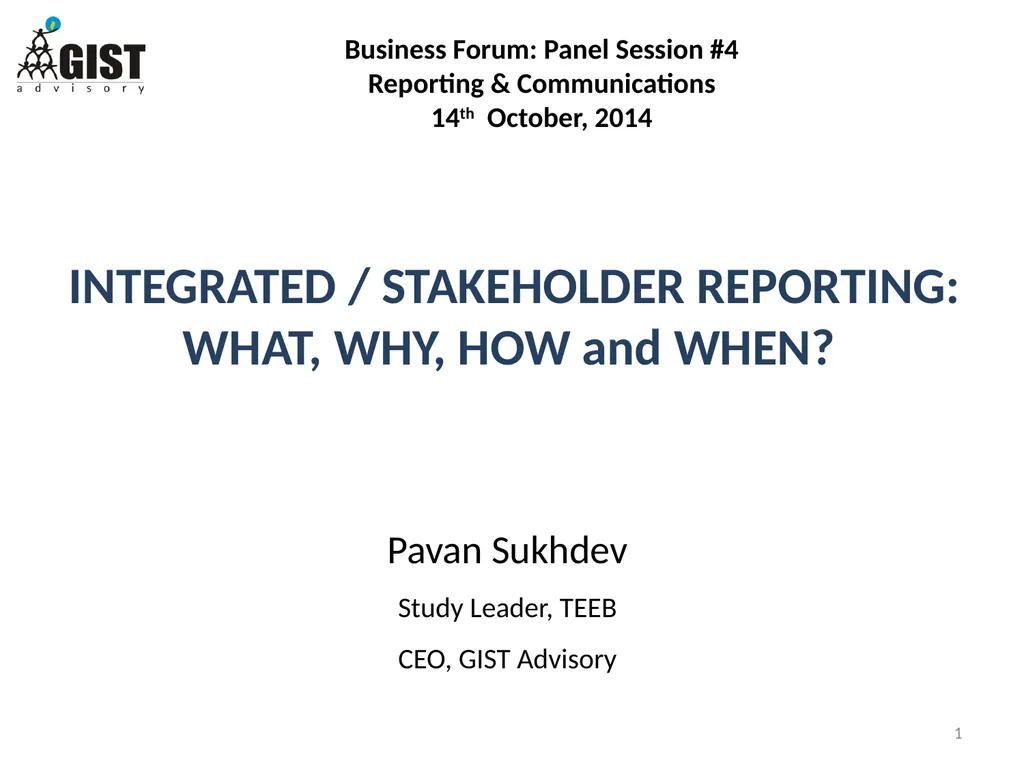
INTEGRATED / STAKEHOLDER REPORTING: WHAT, WHY, HOW
Author: celsa-spraggs | Published: 2025-05-29
Description: INTEGRATED STAKEHOLDER REPORTING: WHAT, WHY, HOW and WHEN? 1 Business Forum: Panel Session 4 Reporting Communications 14th October, 2014 Pavan Sukhdev Study Leader, TEEB CEO, GIST Advisory Statutory Reporting Financial Reporting
Download Presentation
Download the PPT/PDF: Download
Transcript:
Loading transcript…